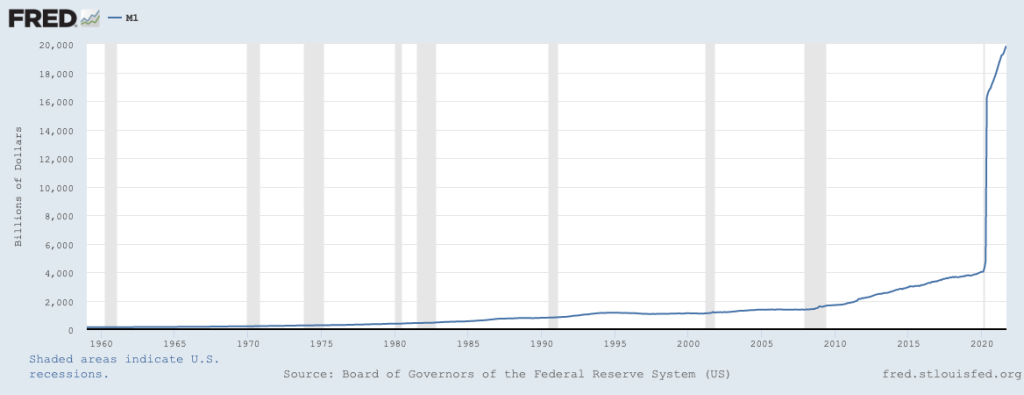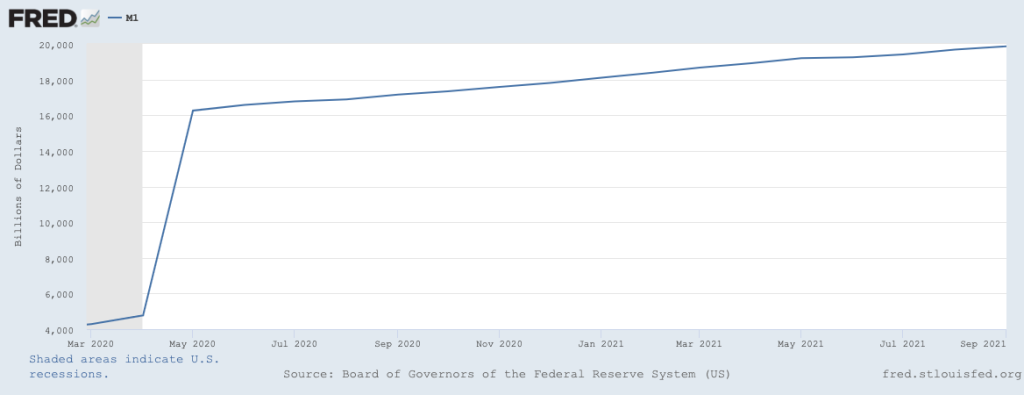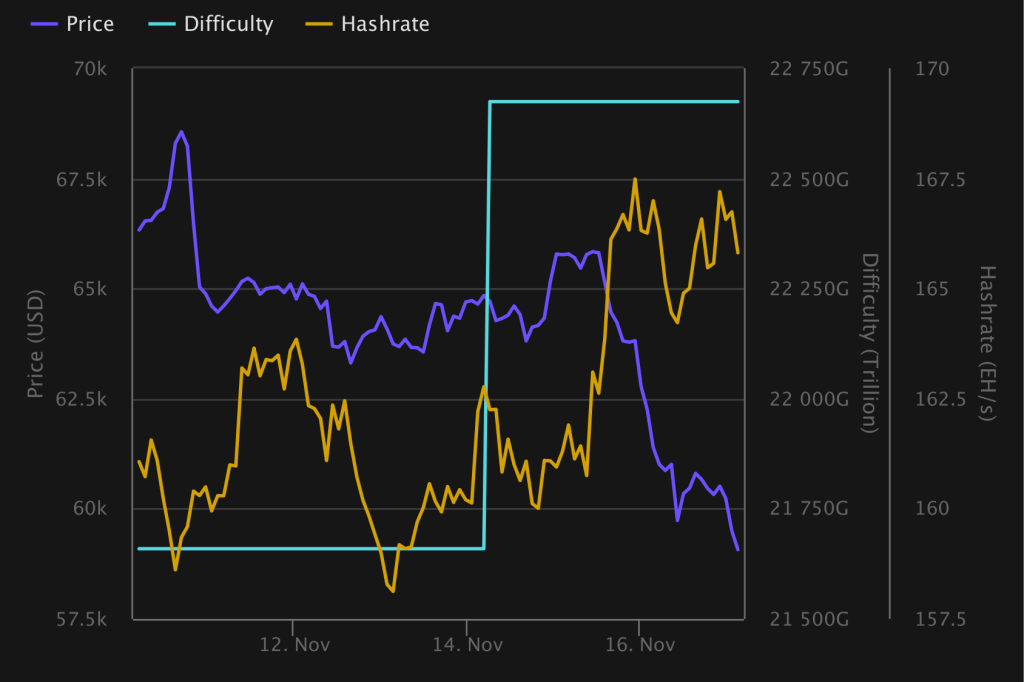Managed Mining
Remote Hands
Mining Services
Case Studies
MiningStore
Contact Us
(877) 467-7780
Menu




The U.S. Bureau of Labor Statistics has released its monthly economic news release summarizing the consumer price index. These reports contain several different indexes (Energy Index, CPI and CPI-U) that each measure a particular collection of goods.
The Bureau measures price changes in the Energy Index, which is comprised of energy commodities and energy services, to gauge inflation in the energy markets. The energy index has increased by 30% over the last year, its largest yearly increase since September 2005. Energy commodity prices (gasoline and fuel oils) have increased by 49.5% over the last year. And energy utility service prices (electricity and piped gas) have increased by 11.2% over the last year. The rightmost column below depicts the unadjusted annual inflation for period ending in October 2021.

President Biden has publicly blamed energy price increases on market manipulation, price gouging, supply chain issues, or a combination thereof. In a recent statement, the President requested the Federal Trade Commission (FTC) to investigate market manipulation and price gouging in sectors with abnormally high levels of inflation present. He also alleged that some price increases were to be expected because rekindling globally interwoven supply chains following COVID-19 government shutdowns is no simple task.
Market manipulation and anti-competitiveness, price gouging, and global supply chain issues exist and contribute to increases in the price of goods. These issues are salient, but inflation can also be caused by increases in the money supply. Accordingly, it is important to also note how federal spending and central bank tools of expansionary monetary policy erode the purchasing power of USDs over time.
For example, the Federal Reserve previously required deposit banks to maintain reserves in a vault or in a federal deposit account. But under the new “ample reserves” regime the reserve requirement has dropped to 0%. We can view M1 to visualize how rapidly the supply of money has increased since the new policy was implemented. M1 includes currency outside the Federal Reserve System, demand deposits at commercial banks, and consumer checking and savings accounts.
The charts below show M1 over different periods of time. Interestingly, M1 was at $3,7464 billion when the ample reserve regime was effected in March of 2020. Most recently, in September 2021, M1 was $19,862.2 billion.


The federal government most commonly references the CPI index and claims that 2% CPI inflation is healthy for the economy. But data from October has revealed that CPI inflation reached a 30-year high, increasing 6.2% over the last year. Annual CPI inflation of 6.2% is the largest yearly increase since the end of November 1990. Moreover, the Consumer Price Index for All Urban Consumers (CPI-U) – which aggregates and estimates the price of a basket of consumer goods in a hypothetical U.S. city – increased 0.9% in October alone.
The CPI and CPI-U only measure the price of a hypothetical market basket. However, the contents of a real market basket will be unique to each consumer. So, an important concept to note is: inflation levels vary by person and geographic location, and will fluctuate based on which goods a particular individual in a particular place chooses to buy. For example, some regions in the U.S. have seen even higher levels of inflation than the already alarming 6.2% increase in the CPI.

The U.S. Treasury bonds market, which represents more than $22 trillion USD, is experiencing volatility and declining yields. Furthermore, a recent S&P credit rating report graded Florida state government bonds at AAA, a better rating than federal bonds or any other state’s bonds. The S&P justified their findings in the following statement: “Florida’s GO bonds are eligible to be rated above the sovereign because we believe the state can maintain better credit characteristics than the U.S. in a stress scenario.” This comes as no surprise considering that real yields have been trending negative for some time now.

U.S. Senators, Cynthia Lumis (Wyoming) and Ron Wyden (Oregon), have delivered on a promise from earlier this year in which Senator Lumis of Wyoming pledged to “responsibly address” digital asset provisions contained in the Bipartisan Infrastructure Framework (BIF).
The Senators desire to alter language in the BIF that would erroneously categorize miners, wallet developers and other software engineers as “brokers” under 26 U.S. Code § 6050I. Section 60501 applies when a business receives $10,000 or more in cash (paper or digital), at which time the recipient must collect the following information: the name, address and tax identification number (TIN) of the cash sender, the amount of cash received and the date and nature of the transaction.
Senators Lummis and Wyden believe that this burdensome provision would stifle growth in the U.S. cryptocurrency economy and lead to an exodus of bitcoin miners, talented developers, and innovative companies who would prefer to relocate to a more favorable international jurisdiction. Wyden has said this proposed amendment is designed to clarify that IRS reporting requirements do not apply to “individuals developing blockchain technology and wallets” and it will also protect miners from any additional requirements.

This past week, the total market capitalization of all cryptocurrencies exceeded $3 trillion at one point. This occurred in part because the President and members of Congress continue to assert that further increasing the money supply through a multi-trillion-dollar spending package is the only way to combat inflation.
The absurdity of that notion, coupled with the prospect of negative real yields in the bond markets, has led many corporations to reduce the amount of USD in their treasuries. As more companies seek to add bitcoin to their balance sheets, the surge of capital into bitcoin and other cryptocurrency markets will likely continue.
Taproot is Bitcoin soft fork that was activated in block #709632. The upgrade increases transaction output privacy and efficiency with the Lightning Network. Taproot introduces a new address type where a simple transaction output is indistinguishable from a multi-signature transaction output. Parties to a bitcoin transaction can not discriminate based on a particular type of output because they all look the same.
Taproot also reduces the amount of data required for each block which will allow for more transactions to be included within each block. Bitcoin miners generally support the Taproot upgrade, at least more than they supported Segwitt, which received substantial opposition from bitcoin miners. Miners understand that the speed, efficiency and volume of on-chain transactions will increase due to Taproot’s additional privacies and data size reduction.